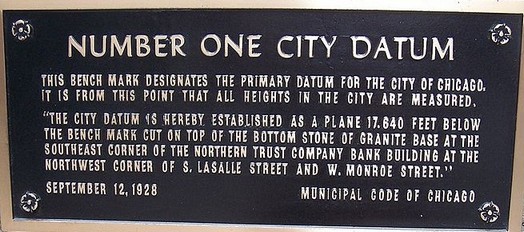In recent months I’ve been spending time learning Swift. As such, I’ve been thinking a lot about data structures. Swift has a nice spectrum of possible data structures to pick from — something that I’ll have to discuss another day — but what interests me here is the question of data itself. Scholars often treat etymology as a special kind of divination. (And philosophers like Heidegger made a career of it.) But I find the etymology of the word “data” to be particularly elegant and revealing.
Data comes from the Latin dare, meaning to give. But it’s the form that’s most interesting. First of all, it’s in the neuter plural, so it refers to “things.” Second, data is a participle in the perfect passive form. Thus the word means literally “the things having been given.” Or, for short, I like to think of data as “the givens.” French preserves this double meaning nicely by calling data the données. (The French also use the word “data,” although *I believe* this is technically an anglicism imported from technical vocabulary, despite French being much closer to Latin than English.)
Data are the things having been given. Using the language of philosophy, and more specifically of phenomenology, data are the very facts of the givenness of Being. They are knowable and measurable. Data display a facticity; they are “what already exists,” and as such are a determining apparatus. They indicate what is present, what exists. The word data carries certain scientific or empirical undertones. But more important are the phenomenological overtones: data refer to the neutered, generic fact of the things having been given.
Even in this simple arrangement a rudimentary relation holds sway. For implicit in the notion of the facticity of givenness is a relation to givenness. Data are not just a question of the givenness of Being, but are also necessarily illustrative of a relationship back toward a Being that has been given. In short, givenness itself implies a relation. This is one of the fundamental observations of phenomenology.

Even if nothing specific can be said about a given entity x, it is possible to say that, if given, x is something as opposed to nothing, and therefore that x has a relationship to its own givenness as something. X is “as x”; the as-structure is all that is required to demonstrate that x exists in a relation. (By contrast, if x were immanent to itself, it would not be possible to assume relation. But by virtue of being made distinct as something given, givenness implies non-immanence and thus relation.) Such a “something” can be understood in terms of self-similar identity or, as the scientists say, negentropy, a striving to remain the same.
So even as data are defined in terms of their givenness, their non-immanence with the one, they also display a relation with themselves. Through their own self-similarity or relation with themselves, they tend back toward the one (as the most generic instance of the same). The logic of data is therefore a logic of existence and identity: on the one hand, the facticity of data means that they exist, that they ex-sistere, meaning to stand out of or from; on the other hand, the givenness of data as something means that they assume a relationship of identity, as the self-similar “whatever entity” that was given.
The true definition of data, therefore, is not simply “the things having been given.” The definition must conjoin givenness and relation. For this reason, data often go by another name, a name that more suitably describes the implicit imbrication of givenness and relation. The name is information.
Information combines both aspects of data: the root form refers to a relationship (here a relationship of identity as same), while the prefix in refers to the entering into existence of form, the actual givenness of abstract form into real concrete formation.
Heidegger sums it up well with the following observation about the idea: “All metaphysics including its opponent positivism speaks the language of Plato. The basic word of its thinking, that is, of his presentation of the Being of beings, is eidos, idea: the outward appearance in which beings as such show themselves. Outward appearance, however, is a manner of presence.” In other words, outward appearance or idea is not a deviation from presence, or some precondition that produces presence. Idea is precisely coterminous with presence. To understand data as information means to understand data as idea, but not just idea, also a host of related terms: form, class, concept, thought, image, outward appearance, shape, presence, or form-of-appearance.
As Lisa Gitelman has reminded us, there is no such thing as “raw” data, because to enter into presence means to enter into form. An entity “in-form” is not a substantive entity, nor is it an objective one. The in-form is the negentropic transcendental of the situation, be it “material” like the givens or “ideal” like the encoded event. Hence an idea is just as much subject to in-formation as are material objects. An oak tree is in-formation, just as much as a computer file is in-formation.
All of this is simply another way to understand Parmenides’s claim about the primary identity of philosophy: “Thought and being are the same.”
[Contains a modified excerpt from Laruelle: Against the Digital [University of Minnesota Press: 2014], pp. 75-77.]
_____
Alexander R. Galloway is a writer and computer programer working on issues in philosophy, technology, and theories of mediation. Professor of Media, Culture, and Communication at New York University, he is author of several books and dozens of articles on digital media and critical theory, including Protocol: How Control Exists after Decentralization (MIT, 2006), Gaming: Essays in Algorithmic Culture (University of Minnesota, 2006); The Interface Effect (Polity, 2012), and most recently Laruelle: Against the Digital (University of Minnesota, 2014), reviewed here in 2014. Galloway has recently been writing brief notes on media and digital culture and theory at his blog, on which this post first appeared.
Leave a Reply